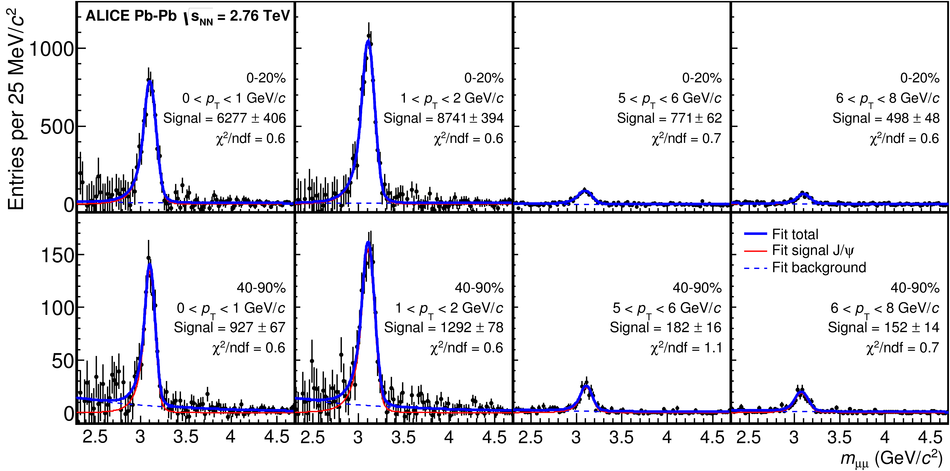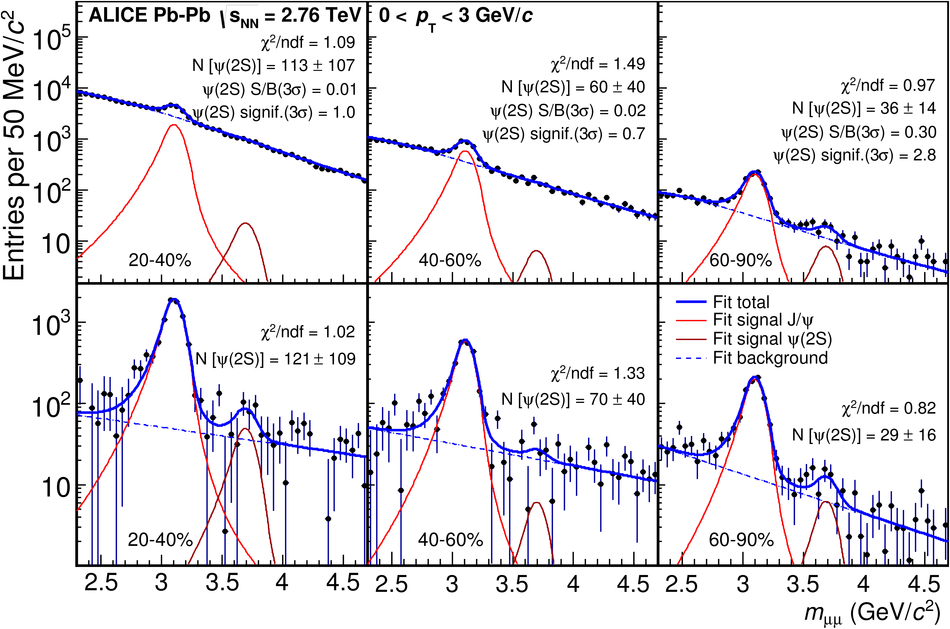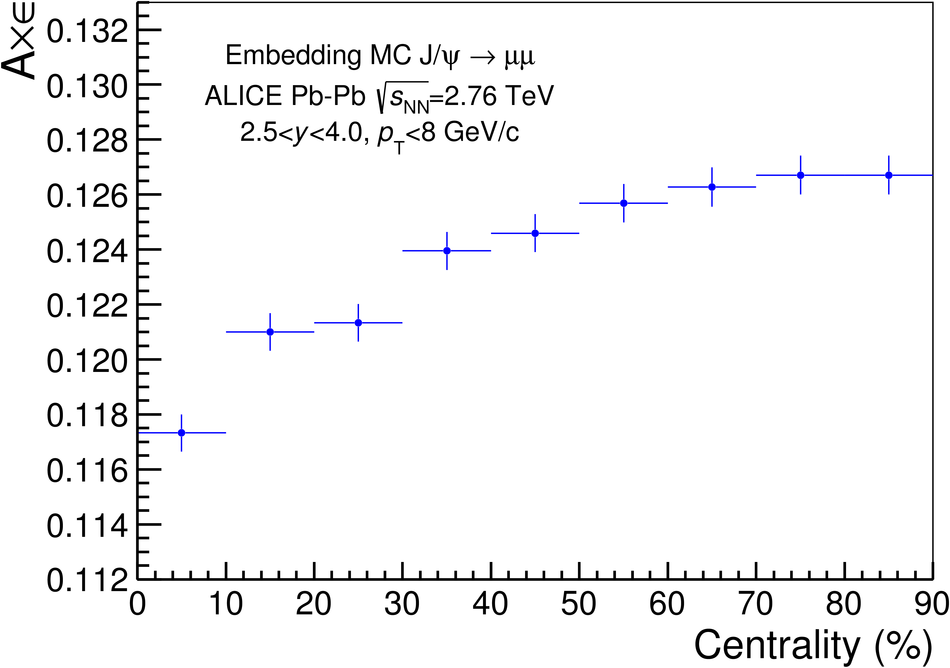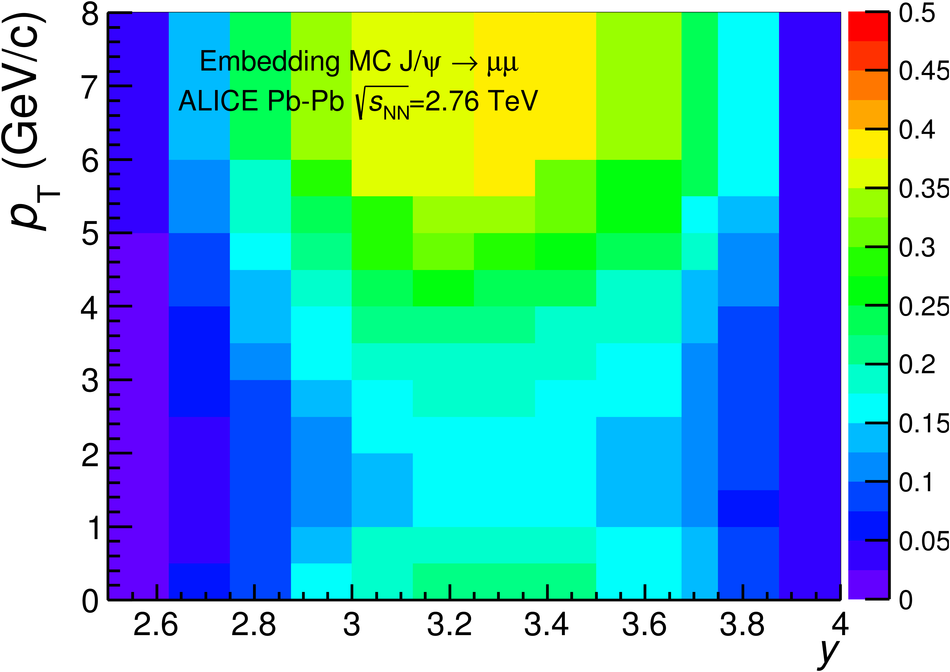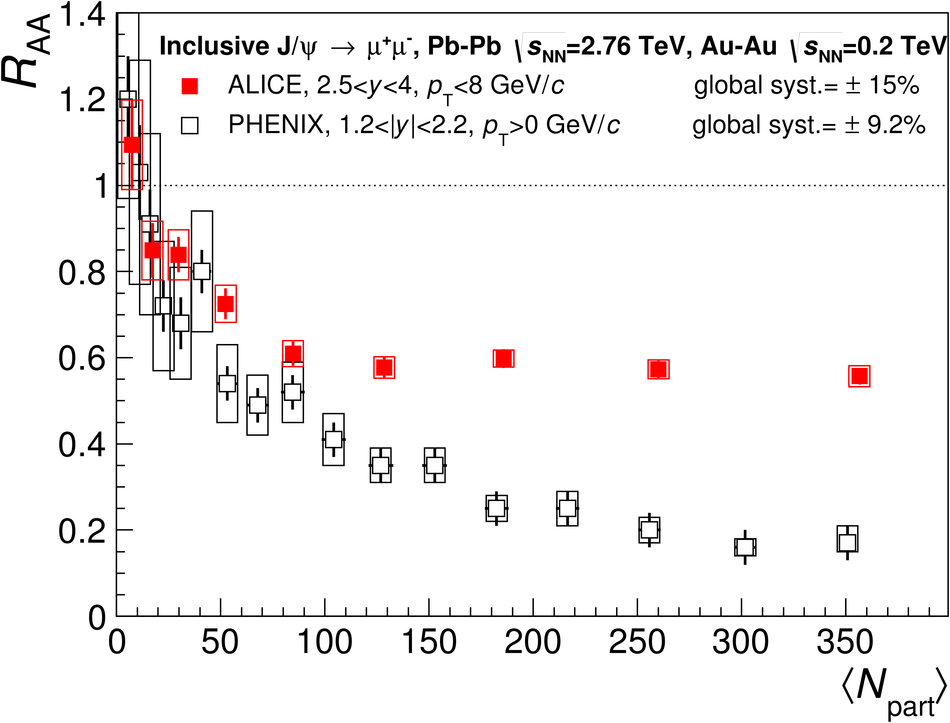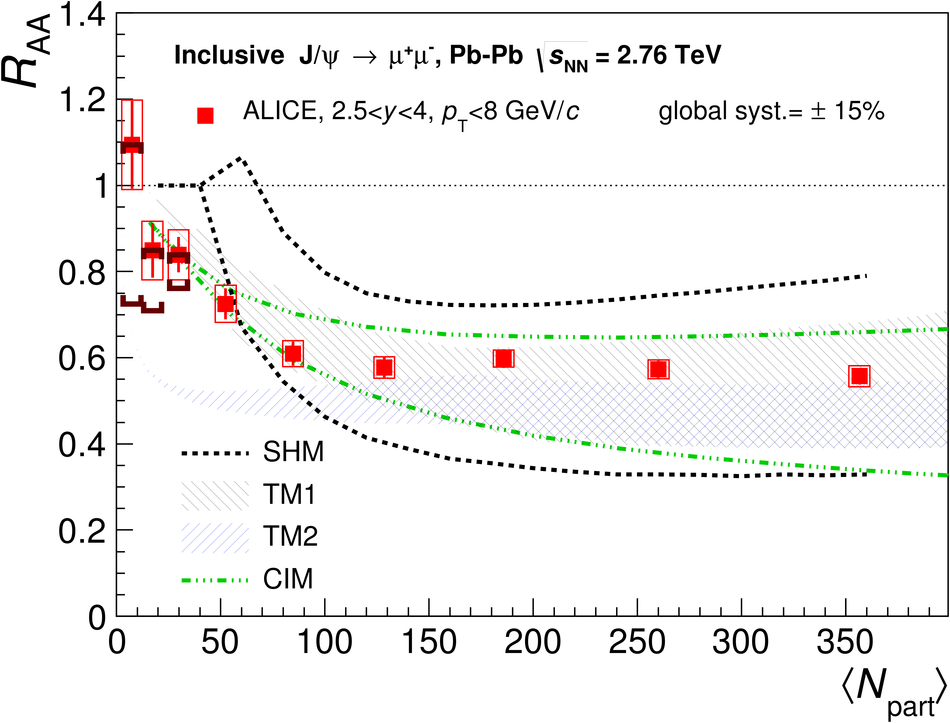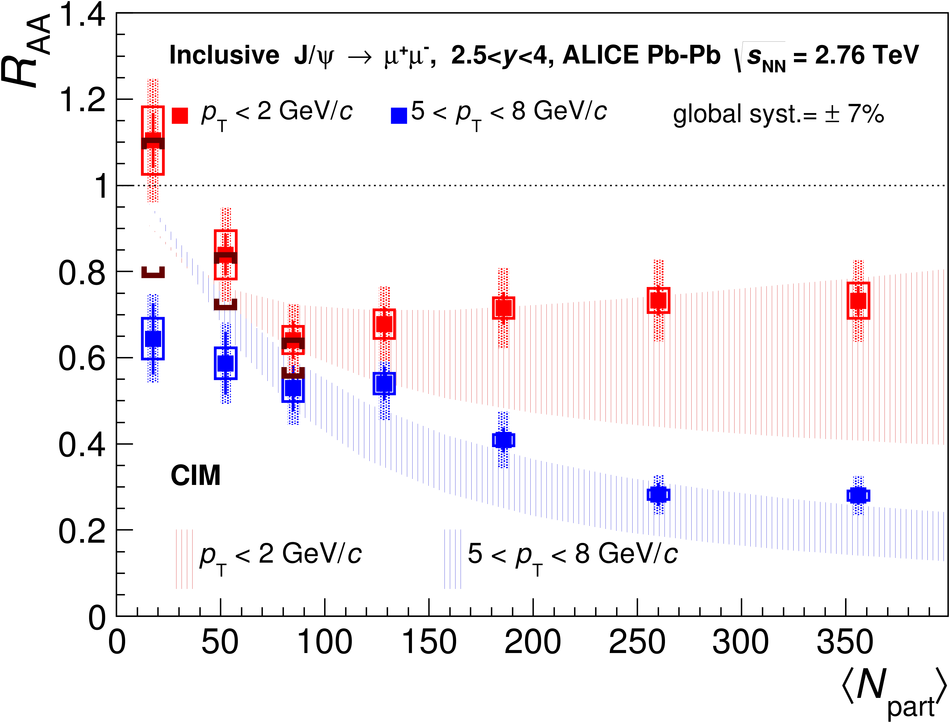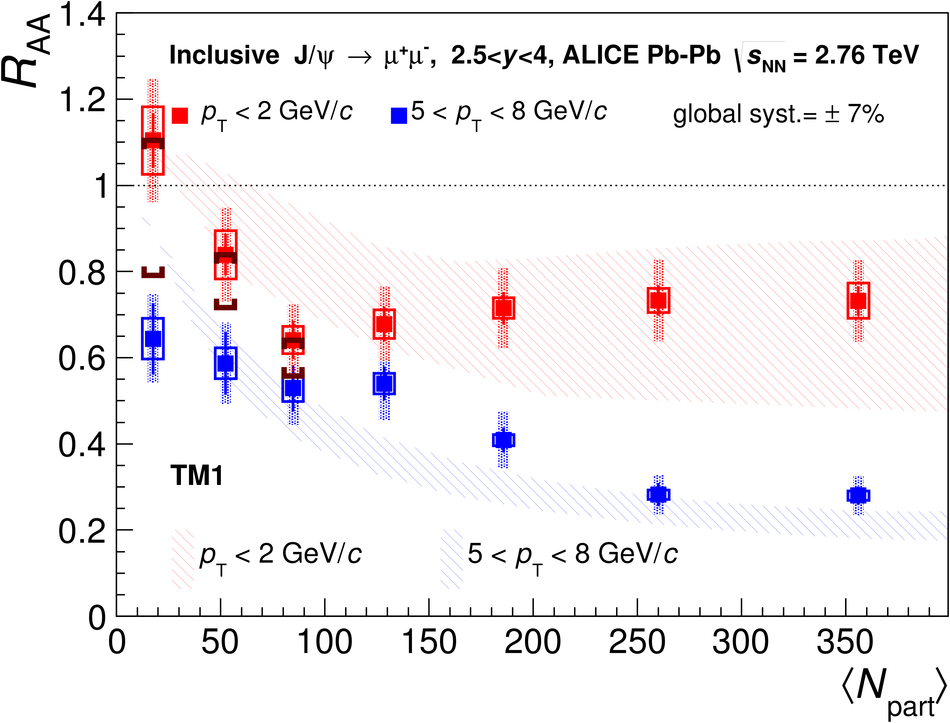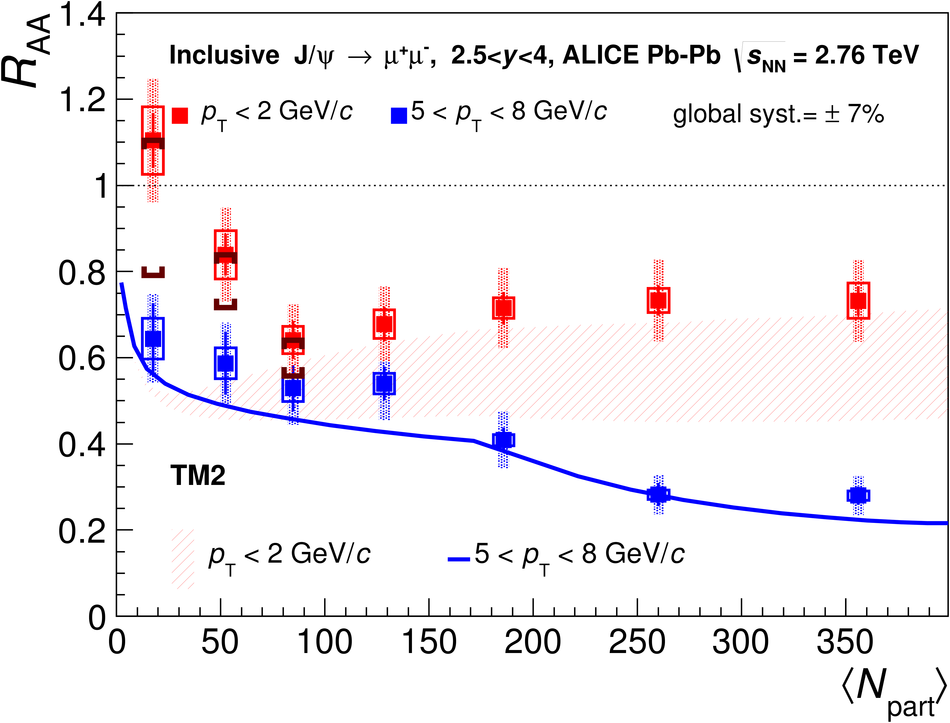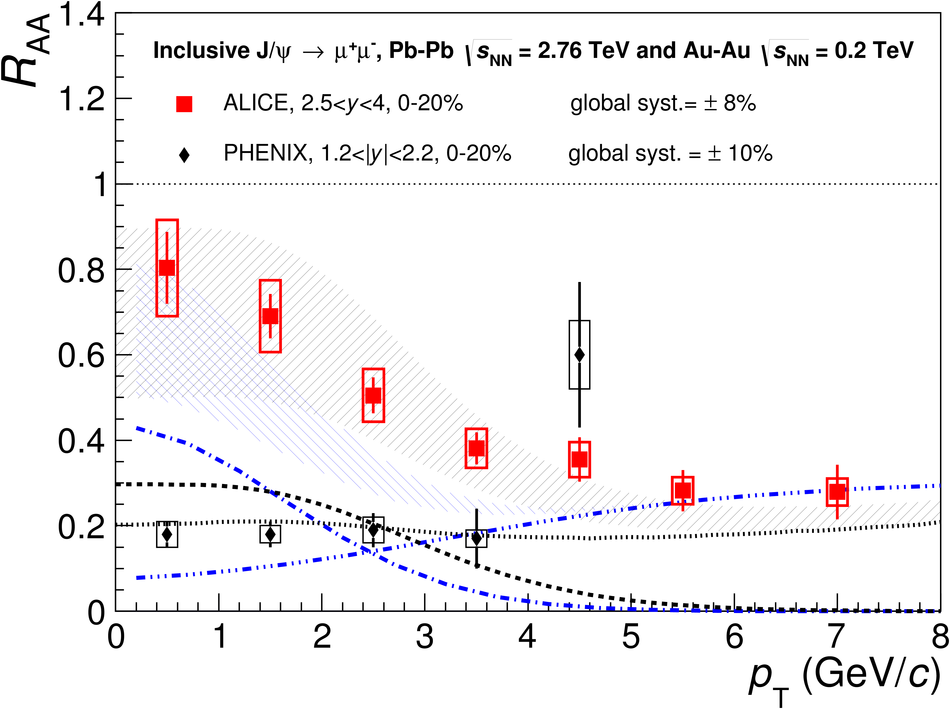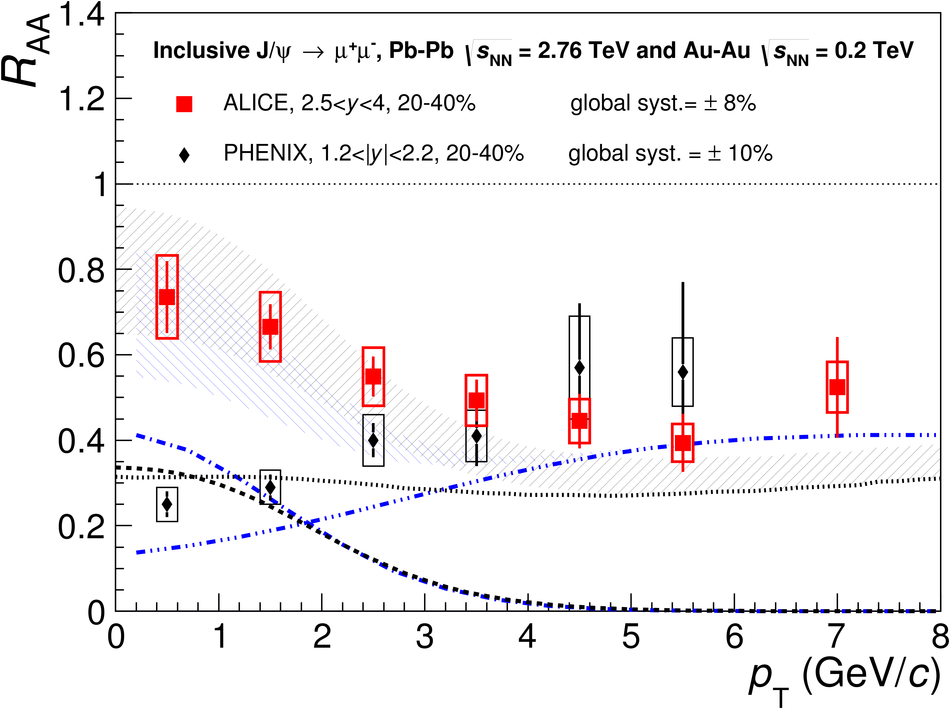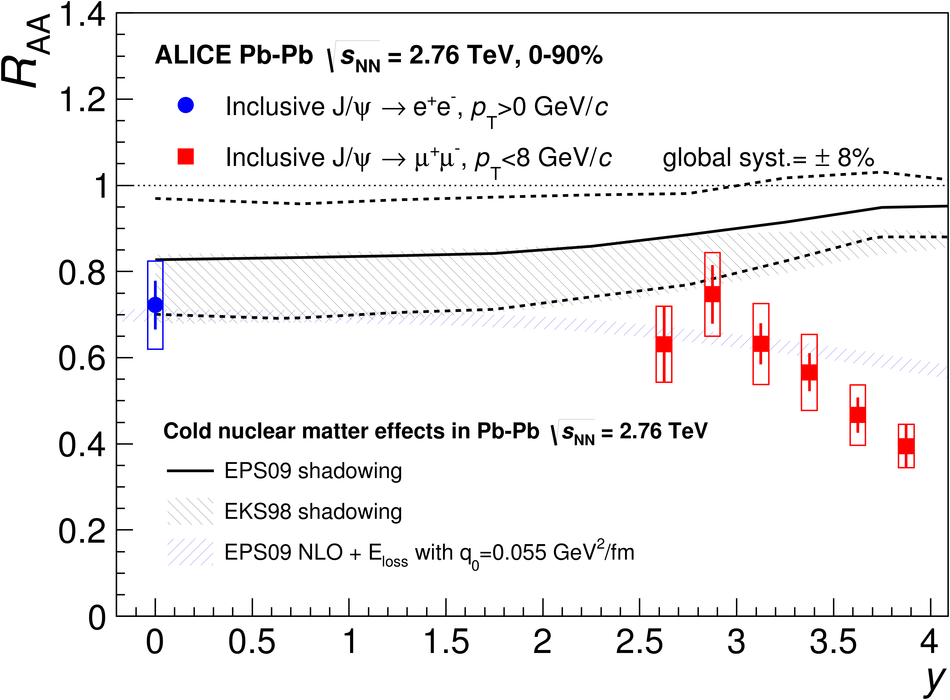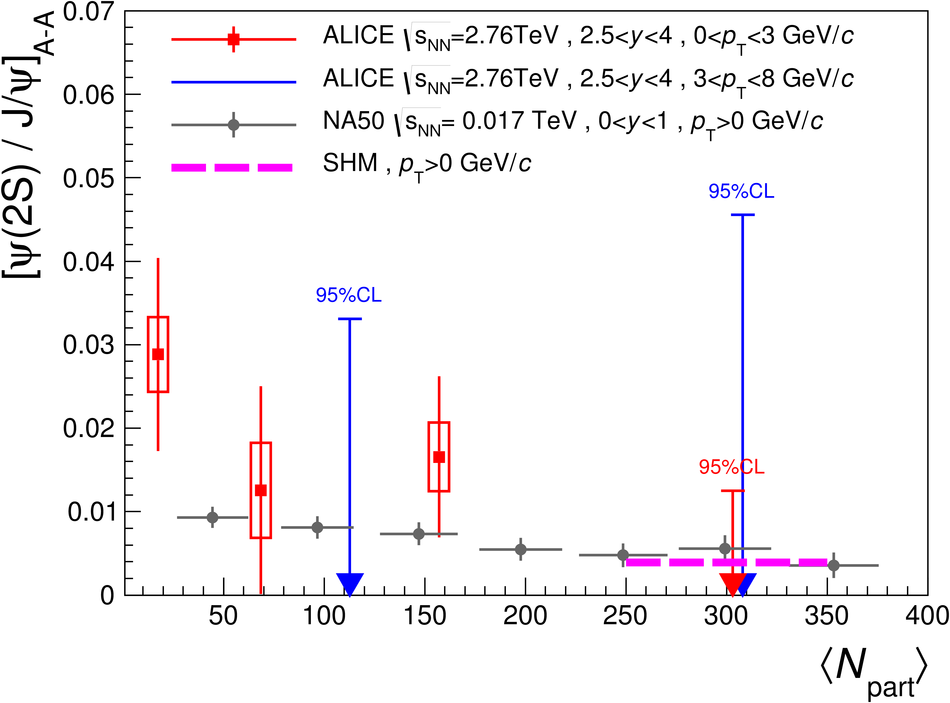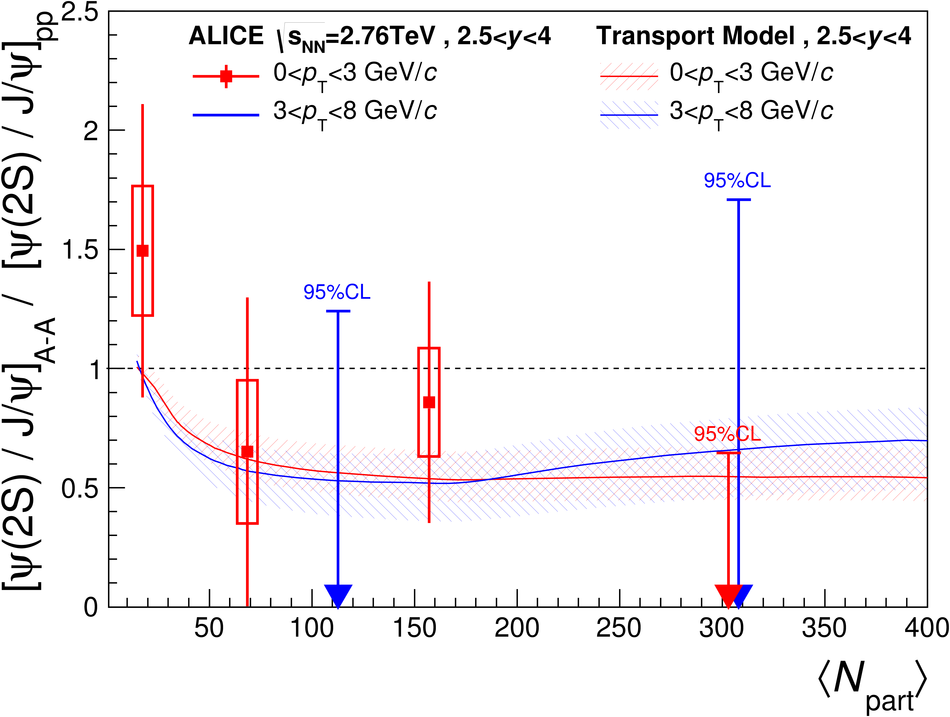The production of J/$\psi$ and $\psi(2S)$ was measured with the ALICE detector in Pb-Pb collisions at the LHC. The measurement was performed at forward rapidity ($2.5 <~ y <~ 4 $) down to zero transverse momentum ($p_{\rm T}$) in the dimuon decay channel. Inclusive J/$\psi$ yields were extracted in different centrality classes and the centrality dependence of the average $p_{\rm T}$ is presented. The J/$\psi$ suppression, quantified with the nuclear modification factor ($R_{\rm AA}$), was studied as a function of centrality, transverse momentum and rapidity. Comparisons with similar measurements at lower collision energy and theoretical models indicate that the J/$\psi$ production is the result of an interplay between color screening and recombination mechanisms in a deconfined partonic medium, or at its hadronization. Results on the $\psi(2S)$ suppression are provided via the ratio of $\psi(2S)$ over J/$\psi$ measured in pp and Pb-Pb collisions.
JHEP 05 (2016) 179
HEP Data
e-Print: arXiv:1506.08804 | PDF | inSPIRE
CERN-PH-EP-2015-157


